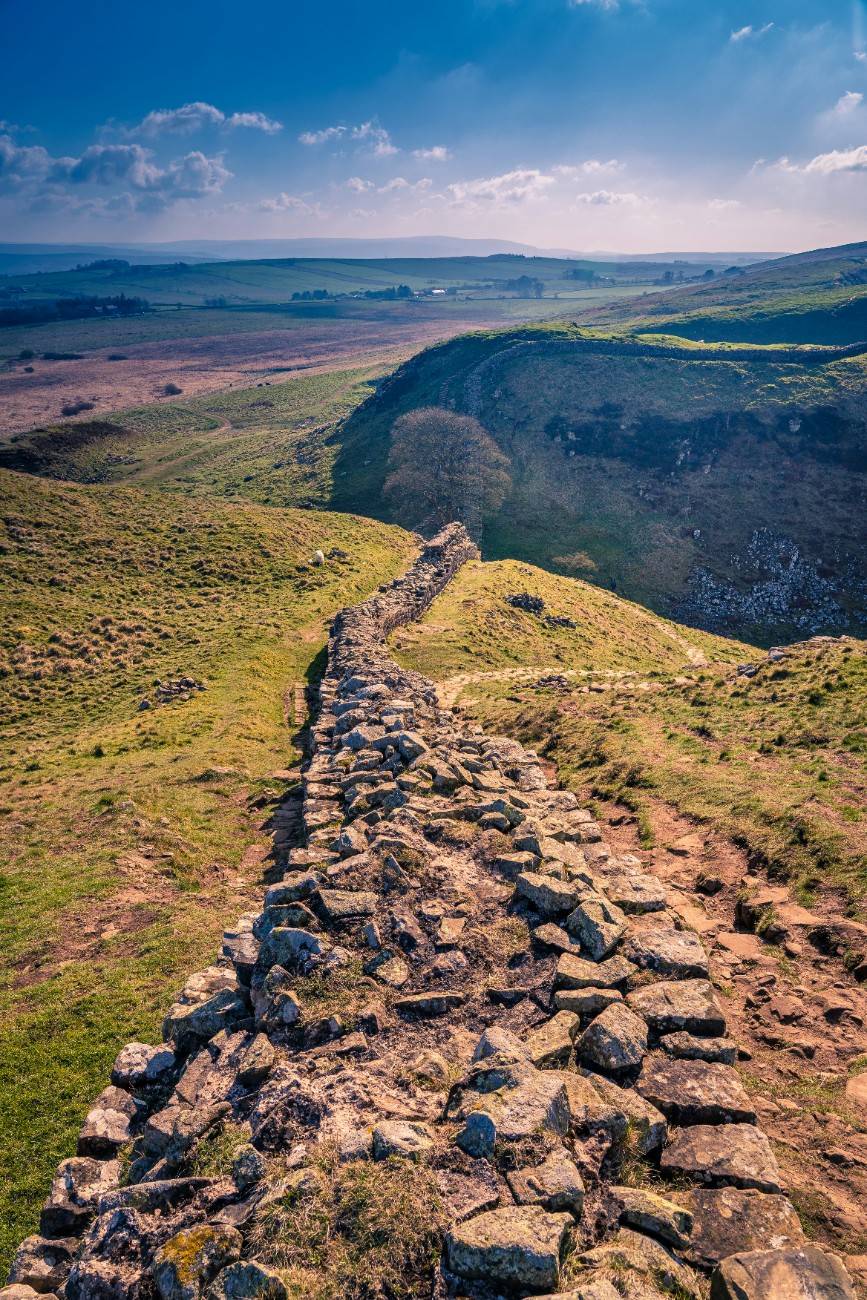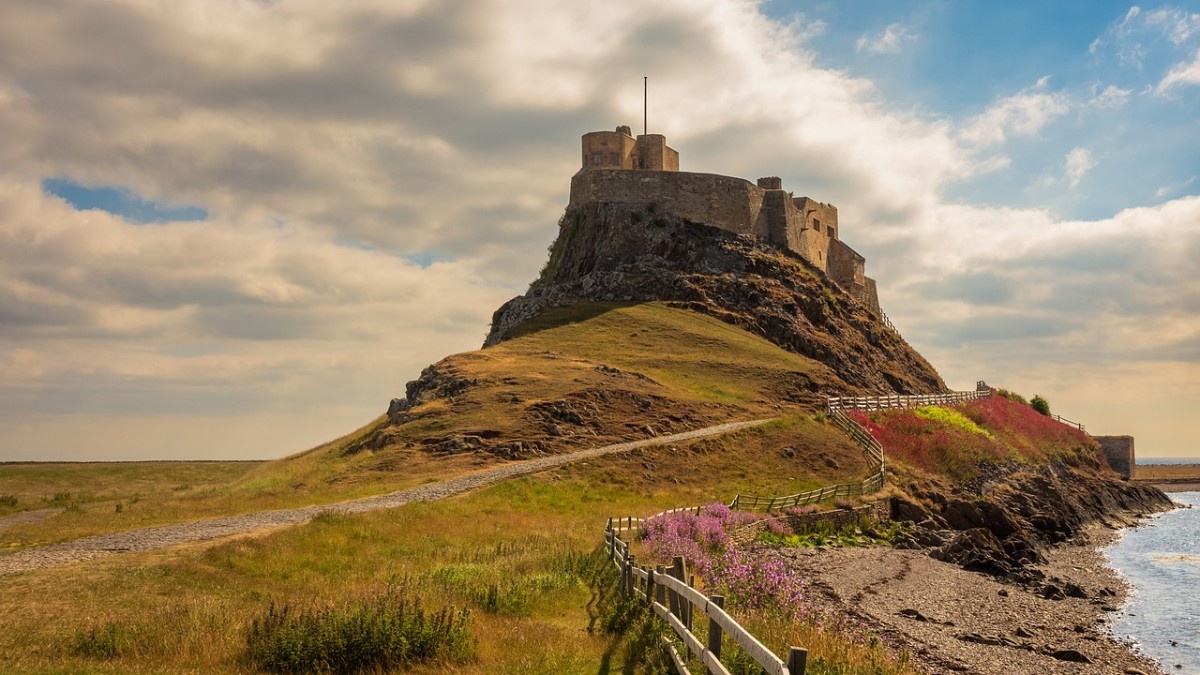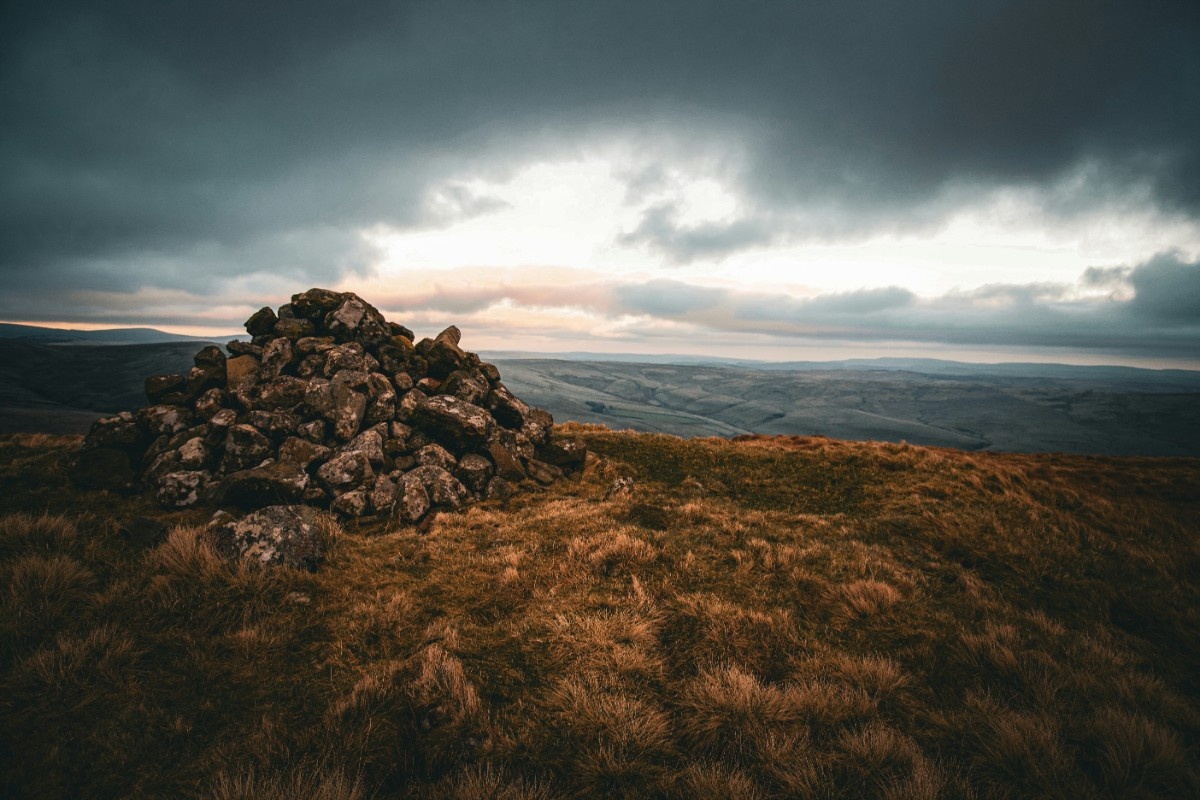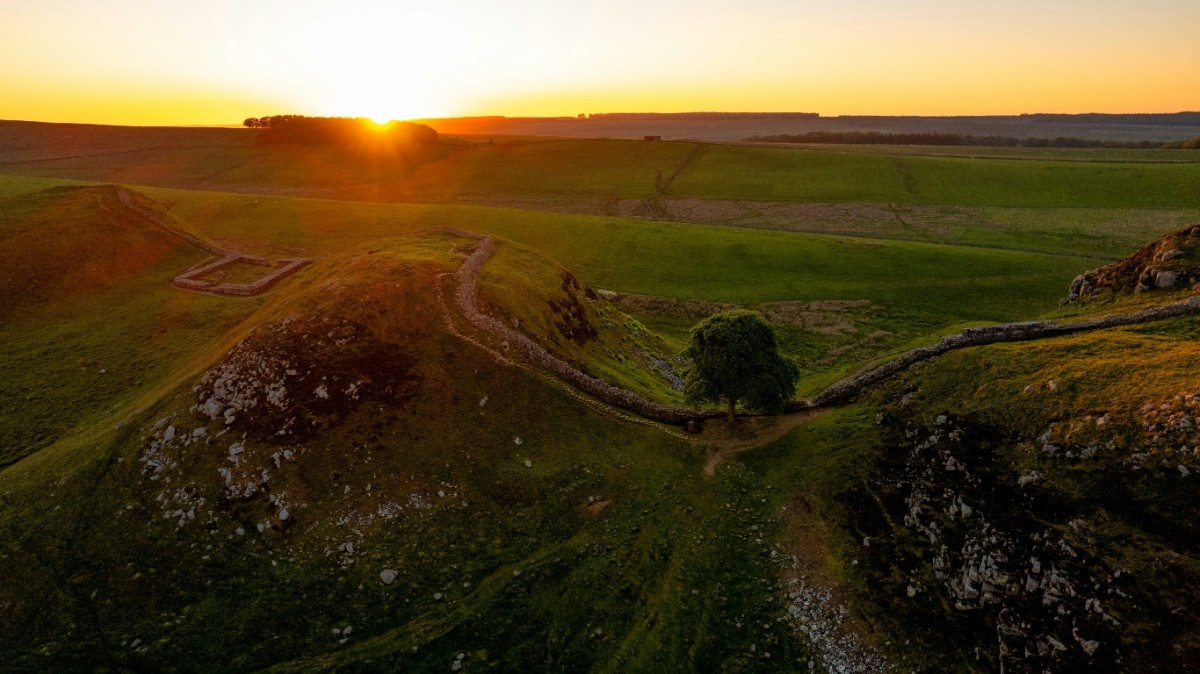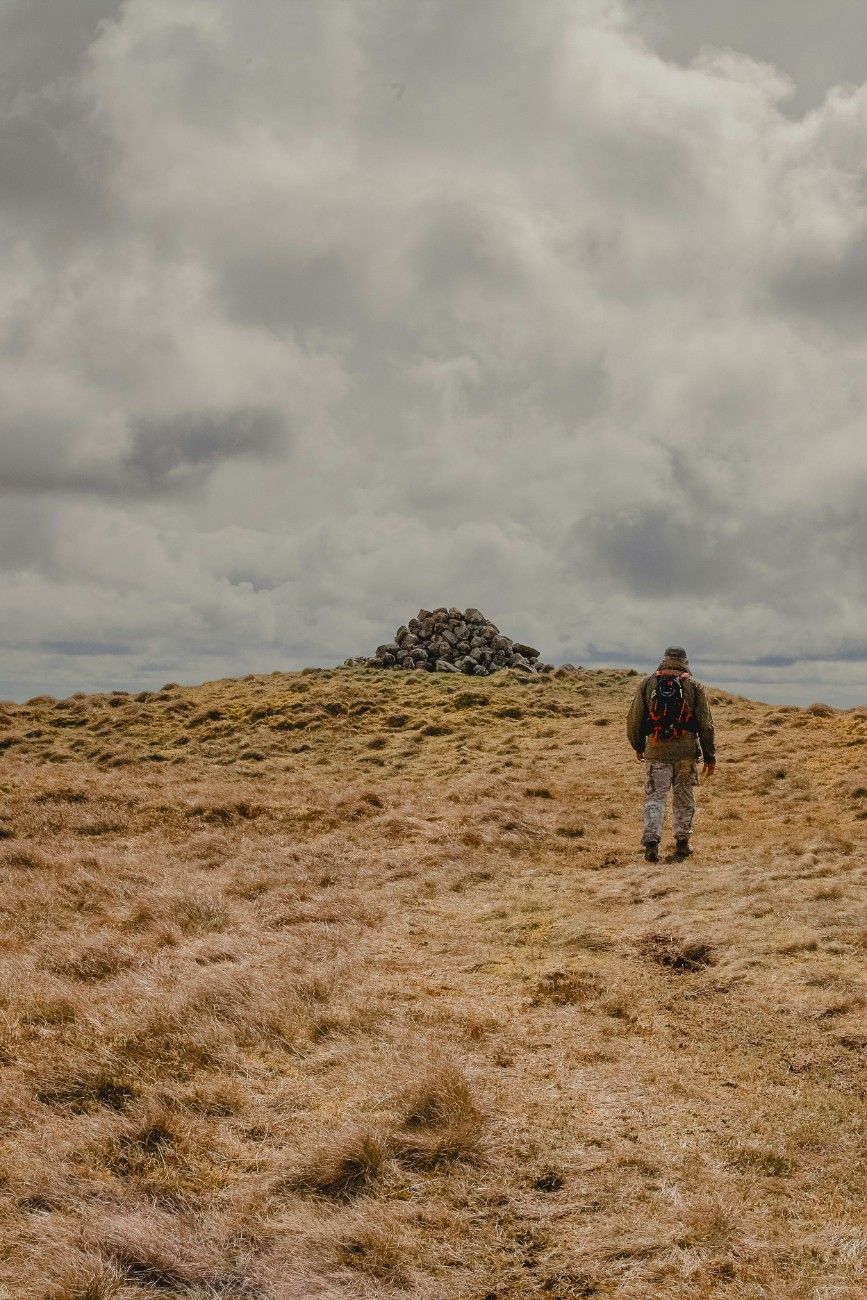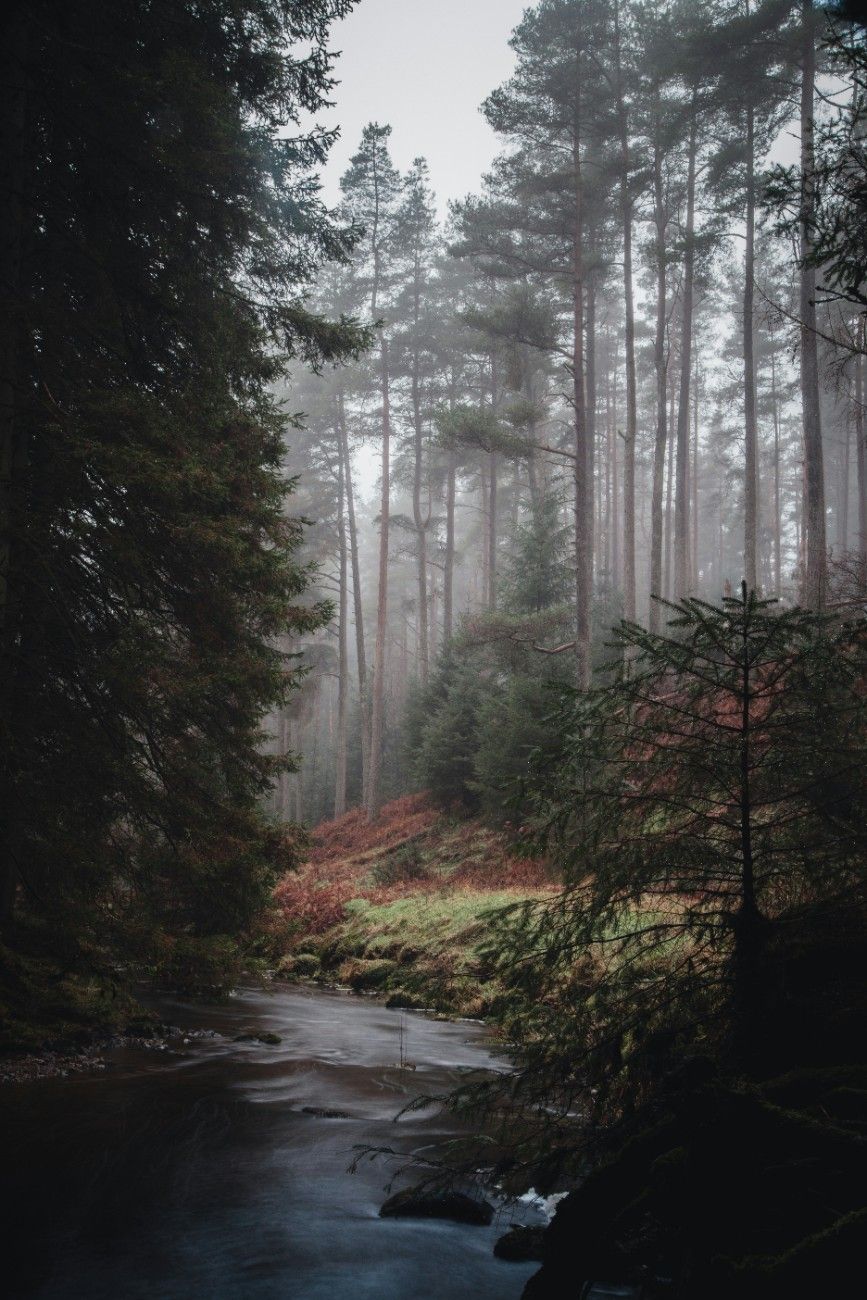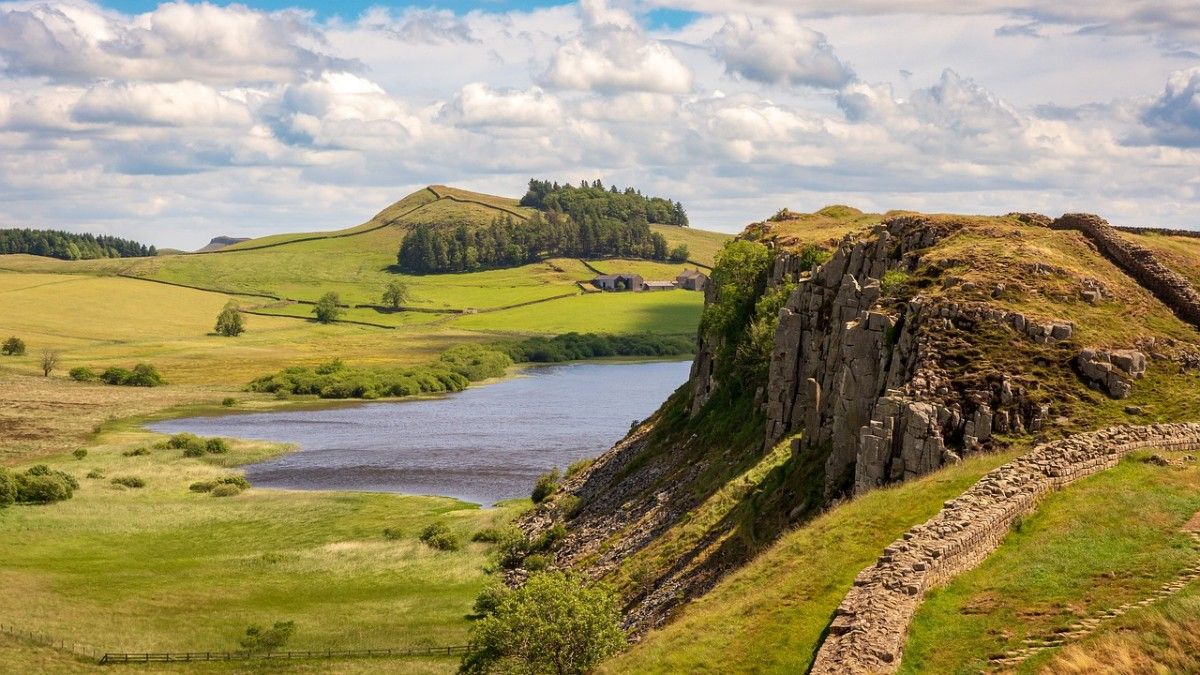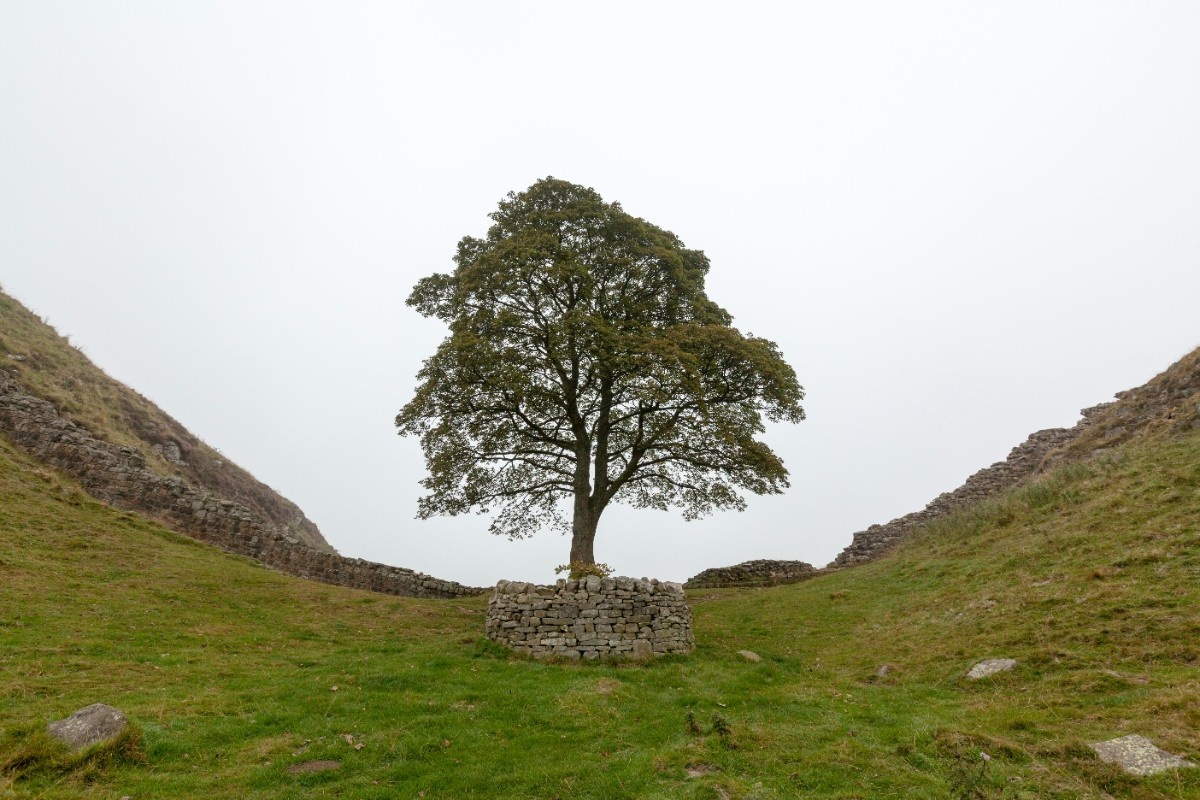Introduction to Northumberland National Park
Nestled in the heart of North East England, Northumberland National Park is a vast expanse of breathtaking landscapes, rich history, and diverse wildlife. Spanning over 1,030 square kilometres, it is the northernmost national park in England, bordering Scotland to the north and stretching from Hadrian's Wall in the south to the Cheviot Hills in the north. Established in 1956, the park has been a haven for outdoor enthusiasts, nature lovers, and history buffs alike, offering a plethora of activities and attractions that showcase the best of Northumberland's natural and cultural heritage.
The park's unique location and geography have shaped its character and appeal. It is home to the Cheviot Hills, a range of rolling hills that form the border between England and Scotland, as well as the Simonside Hills, a series of distinctive flat-topped hills that offer stunning views of the surrounding landscape. The park also encompasses a significant portion of Hadrian's Wall, a UNESCO World Heritage Site that marks the northernmost frontier of the Roman Empire in Britain. This rich tapestry of natural and historical features makes Northumberland National Park a must-visit destination for anyone seeking to explore the beauty and diversity of the English countryside.
A Brief History of Northumberland National Park
The history of Northumberland National Park is a fascinating one, shaped by centuries of human activity and natural processes. The earliest evidence of human presence in the area dates back to the Mesolithic period, around 8,000 years ago, when hunter-gatherers roamed the landscape in search of food and shelter. Over time, successive waves of settlers, including the Romans, the Anglo-Saxons, and the Normans, left their mark on the land, building fortifications, settlements, and farms that have become an integral part of the park's cultural heritage.
One of the most significant historical features of the park is Hadrian's Wall, a 73-mile-long fortification built by the Roman Emperor Hadrian in the 2nd century AD to mark the northern frontier of the Roman Empire in Britain. The wall, along with its associated forts, settlements, and museums, is a testament to the ingenuity and ambition of the Roman Empire and a window into the life and times of the people who lived and worked along its length.
In more recent history, the park has been shaped by the forces of agriculture, industry, and conservation. The 18th and 19th centuries saw the rise of sheep farming in the area, which transformed the landscape and gave rise to the distinctive dry stone walls that crisscross the hills and valleys. The 20th century brought new challenges, including the pressures of tourism and development, but also saw the establishment of the park as a protected area, ensuring that its natural and cultural treasures would be preserved for future generations to enjoy.
Northumberland National Park's Natural Wonders
Northumberland National Park is renowned for its stunning natural beauty, encompassing a diverse range of habitats and landscapes that are home to a wealth of flora and fauna. From the rolling hills and valleys of the Cheviot Hills to the rugged crags and moorlands of the Simonside Hills, the park offers a feast for the senses, with breathtaking vistas, tranquil streams, and vibrant wildflower meadows at every turn.
One of the most iconic features of the park is the Cheviot Hills, a range of gentle, rounded hills that form the border between England and Scotland. The hills are home to a variety of wildlife, including red grouse, black grouse, and curlews, as well as rare plants such as the alpine gentian and the mountain pansy. Visitors can explore the hills on foot, following a network of well-marked trails that offer stunning views of the surrounding landscape and a chance to experience the tranquillity and solitude of this remote and beautiful area.
Another natural wonder of the park is the Simonside Hills, a series of distinctive flat-topped hills that rise above the surrounding moorland. The hills are a popular destination for walkers and climbers, offering a range of challenging routes and stunning views of the surrounding landscape. The hills are also home to a variety of rare and endangered species, including the red squirrel, the black grouse, and the mountain hare, making them an important haven for wildlife conservation.
The Diverse Habitats of Northumberland National Park
Northumberland National Park is home to a rich and diverse range of habitats, each with its own unique character and ecological significance. From the windswept moorlands and peat bogs of the Cheviot Hills to the ancient woodlands and wildflower meadows of the valleys, the park offers a mosaic of habitats that support a wide variety of plant and animal life.
One of the most important habitats in the park is the moorland, which covers around 70% of the park's total area. The moorland is a unique and fragile ecosystem, characterised by low-growing heather, bilberry, and other hardy plants that have adapted to the harsh conditions of the uplands. The moorland is home to a variety of birds, including the red grouse, the merlin, and the hen harrier, as well as mammals such as the mountain hare and the red fox.
Another important habitat in the park is the ancient woodland, which covers around 3% of the park's total area. These woodlands are remnants of the vast forests that once covered much of Britain, and are home to a rich diversity of plant and animal life, including rare species such as the red squirrel and the wood warbler. The park's woodlands are also an important cultural and historical resource, with many of them having been managed for centuries as a source of timber, fuel, and other resources.
The Wildlife of Northumberland National Park
Northumberland National Park is a haven for wildlife, with a wide variety of species calling the park home. From the elusive red squirrel to the majestic golden eagle, the park offers a chance to see some of Britain's most iconic and endangered species in their natural habitat.
One of the most charismatic species in the park is the red squirrel, a native species that has been largely displaced from much of Britain by the introduced grey squirrel. Northumberland National Park is one of the last strongholds of the red squirrel in England, with a thriving population that is carefully monitored and protected by park rangers and volunteers.
Another iconic species in the park is the golden eagle, a magnificent bird of prey that is rarely seen in England outside of Northumberland. The park is home to a small but stable population of golden eagles, which can sometimes be seen soaring over the hills and valleys in search of prey.
Other notable species in the park include the otter, the black grouse, the curlew, and the mountain hare, all of which are carefully monitored and protected by park staff and volunteers. The park also offers a chance to see a wide variety of plant life, from the delicate alpine flowers of the Cheviot Hills to the stunning displays of bluebells and primroses in the park's ancient woodlands.
Exploring Northumberland National Park
Northumberland National Park offers a wealth of opportunities for outdoor recreation and adventure, with a range of activities and attractions to suit all interests and abilities. Whether you're a seasoned hiker, a keen birdwatcher, or simply looking for a peaceful escape from the hustle and bustle of everyday life, the park has something to offer.
One of the most popular ways to explore the park is on foot, with a network of well-marked trails and footpaths that crisscross the landscape. The park offers a range of walking routes, from gentle strolls through the valleys and woodlands to challenging hikes up the Cheviot Hills and along Hadrian's Wall. Many of the trails offer stunning views of the surrounding landscape, as well as a chance to spot some of the park's iconic wildlife.
Another popular activity in the park is cycling, with a number of designated cycle routes and off-road trails that offer a chance to explore the park's stunning scenery on two wheels. The park also offers opportunities for horse riding, with a network of bridleways and trails that are suitable for riders of all abilities.
For those interested in history and culture, the park offers a range of attractions and activities that showcase the rich heritage of the area. Visitors can explore the remains of Roman forts and settlements along Hadrian's Wall, visit the park's museums and visitor centres to learn about the history and ecology of the area, or take part in guided walks and talks led by park rangers and local experts.
Walking and Hiking in Northumberland National Park
Walking and hiking are among the most popular activities in Northumberland National Park, with a range of trails and routes to suit all abilities and interests. The park offers a network of well-marked footpaths and trails that crisscross the landscape, offering stunning views of the surrounding hills, valleys, and moorlands.
One of the most iconic walking routes in the park is the Hadrian's Wall Path, a 84-mile-long trail that follows the course of the Roman wall from Wallsend in the east to Bowness-on-Solway in the west. The trail offers a chance to explore the remains of Roman forts, settlements, and museums along the way, as well as stunning views of the surrounding landscape.
Another popular walking route in the park is the Pennine Way, a 268-mile-long trail that runs from Edale in the Peak District to Kirk Yetholm in the Scottish Borders. The trail passes through the heart of Northumberland National Park, offering a chance to explore the stunning scenery of the Cheviot Hills and the Simonside Hills.
For those looking for a more gentle walking experience, the park offers a range of shorter trails and circular walks that are suitable for families and less experienced walkers. These include the Hareshaw Linn trail, a 2.5-mile circular walk that takes in a stunning waterfall and ancient woodland, and the Simonside Hills trail, a 4.5-mile circular walk that offers stunning views of the surrounding landscape.
Cycling and Mountain Biking in Northumberland National Park
Cycling and mountain biking are popular activities in Northumberland National Park, with a range of designated cycle routes and off-road trails that offer a chance to explore the park's stunning scenery on two wheels.
One of the most popular cycling routes in the park is the Sandstone Way, a 120-mile-long off-road trail that runs from Berwick-upon-Tweed in the north to Hexham in the south. The trail passes through the heart of the park, offering a chance to explore the stunning scenery of the Cheviot Hills and the Simonside Hills, as well as a range of historical and cultural attractions along the way.
Another popular cycling route in the park is the Pennine Cycleway, a 150-mile-long trail that runs from Derby to Berwick-upon-Tweed, passing through the heart of Northumberland National Park along the way. The trail offers a chance to explore the stunning scenery of the North Pennines and the Cheviot Hills, as well as a range of historical and cultural attractions.
For those looking for a more challenging mountain biking experience, the park offers a range of off-road trails and routes that are suitable for experienced riders. These include the Bloody Bush trail, a challenging 8-mile route that takes in some of the park's most stunning scenery, and the Deadwater trail, a 12-mile route that offers a chance to explore the remote and rugged landscape of the Cheviot Hills.
Hadrian's Wall: A UNESCO World Heritage Site
One of the most significant historical and cultural attractions in Northumberland National Park is Hadrian's Wall, a UNESCO World Heritage Site that marks the northernmost frontier of the Roman Empire in Britain. The wall, which stretches for 73 miles from the Solway Firth in the west to Wallsend in the east, was built by the Roman Emperor Hadrian in the 2nd century AD to defend the Roman province of Britannia from the tribes to the north.
Today, Hadrian's Wall is a popular destination for visitors from around the world, offering a chance to explore the remains of Roman forts, settlements, and museums along its length. The wall passes through the heart of Northumberland National Park, with a number of key sites and attractions located within the park's boundaries.
One of the most iconic sites along the wall is Sycamore Gap, a distinctive tree that stands in a dramatic dip in the wall near the village of Once Brewed. The tree, which has become a symbol of the park and the wall, was made famous by its appearance in the 1991 film "Robin Hood: Prince of Thieves".
Another important site along the wall is Housesteads Roman Fort, one of the best-preserved Roman forts in Britain. The fort, which was built in the 2nd century AD, offers a chance to explore the remains of barracks, granaries, and other buildings that housed the Roman soldiers who guarded the frontier.
The Significance of Hadrian's Wall
Hadrian's Wall is one of the most important Roman monuments in Britain, offering a unique insight into the history and culture of the Roman Empire on the edge of its northernmost frontier. The wall was built by the Roman Emperor Hadrian in the 2nd century AD, and stretched for 73 miles from the Solway Firth in the west to Wallsend in the east.
The wall was designed to defend the Roman province of Britannia from the tribes to the north, and was manned by a force of around 9,000 soldiers at its peak. The wall was not just a military fortification, however, but also a symbol of Roman power and authority, marking the edge of the empire and serving as a reminder of Rome's might to those who lived beyond its borders.
Today, Hadrian's Wall is recognised as a UNESCO World Heritage Site, and is one of the most popular tourist attractions in the UK. The wall offers a chance to explore the remains of Roman forts, settlements, and museums along its length, providing a unique insight into the history and culture of the Roman Empire on the edge of its northernmost frontier.
The significance of Hadrian's Wall extends beyond its historical and cultural value, however. The wall also plays an important role in the ecology and conservation of Northumberland National Park, providing a habitat for a wide variety of plant and animal species, and serving as a corridor for wildlife movement through the landscape.
Exploring Hadrian's Wall in Northumberland National Park
Northumberland National Park is home to some of the most important and well-preserved sections of Hadrian's Wall, offering a chance to explore the history and culture of the Roman Empire in a stunning natural setting. The park offers a range of attractions and activities related to the wall, from guided walks and talks to museums and visitor centres.
One of the most popular ways to explore Hadrian's Wall in the park is on foot, with a number of well-marked trails and footpaths that follow the course of the wall through the landscape. The Hadrian's Wall Path, a 84-mile-long trail that runs from Wallsend in the east to Bowness-on-Solway in the west, passes through the heart of the park, offering stunning views of the surrounding hills and valleys along the way.
Another popular attraction along the wall in the park is the Roman Army Museum, located near the village of Once Brewed. The museum offers a chance to explore the history and culture of the Roman army, with displays and exhibits showcasing the weapons, armour, and daily life of the soldiers who guarded the frontier.
Other important sites along the wall in the park include the Roman forts at Housesteads and Chesters, which offer a chance to explore the remains of barracks, granaries, and other buildings that housed the Roman soldiers who guarded the frontier. The park also offers a range of guided walks and talks led by expert guides, providing a unique insight into the history and significance of the wall and the surrounding landscape.
Northumberland National Park Authority
The Northumberland National Park Authority is the body responsible for managing and conserving the park, working to protect its natural and cultural heritage for the benefit of current and future generations. The authority was established in 1956, and is one of ten national park authorities in England and Wales.
The authority's headquarters are located in Hexham, a historic market town on the edge of the park. From here, the authority's staff work to manage the park's resources, promote sustainable tourism and recreation, and engage with local communities and stakeholders to ensure the park's long-term conservation and enhancement.
One of the key roles of the authority is to develop and implement management plans for the park, setting out the vision and priorities for the park's future development and conservation. The current management plan, which covers the period from 2016 to 2021, focuses on four key themes: conserving and enhancing the park's natural and cultural heritage; promoting sustainable tourism and recreation; supporting local communities and businesses; and working in partnership with other organisations and stakeholders.
The Role of the Northumberland National Park Authority
The Northumberland National Park Authority plays a vital role in the management and conservation of the park, working to protect its natural and cultural heritage for the benefit of current and future generations. The authority's responsibilities are wide-ranging, and include:
- Developing and implementing management plans for the park, setting out the vision and priorities for the park's future development and conservation.
- Managing the park's resources, including its landscapes, habitats, and wildlife, to ensure their long-term conservation and enhancement.
- Promoting sustainable tourism and recreation in the park, working to balance the needs of visitors with the conservation of the park's natural and cultural heritage.
- Engaging with local communities and stakeholders, working to support local businesses and promote sustainable development in the park.
- Providing education and interpretation services, helping visitors to understand and appreciate the park's natural and cultural heritage.
- Working in partnership with other organisations and stakeholders, including local authorities, conservation groups, and landowners, to achieve shared goals and objectives for the park.
The authority's work is guided by a range of legal and policy frameworks, including the National Parks and Access to the Countryside Act 1949, which established the national park system in England and Wales, and the Environment Act 1995, which sets out the statutory purposes of national parks and the duties of national park authorities.
Management Plans and Conservation Efforts
One of the key responsibilities of the Northumberland National Park Authority is to develop and implement management plans for the park, setting out the vision and priorities for the park's future development and conservation. The current management plan, which covers the period from 2016 to 2021, focuses on four key themes:
- Conserving and enhancing the park's natural and cultural heritage, including its landscapes, habitats, and wildlife.
- Promoting sustainable tourism and recreation in the park, working to balance the needs of visitors with the conservation of the park's natural and cultural heritage.
- Supporting local communities and businesses, promoting sustainable development and economic growth in the park.
- Working in partnership with other organisations and stakeholders, including local authorities, conservation groups, and landowners, to achieve shared goals and objectives for the park.
The management plan sets out a range of specific actions and initiatives that the authority will undertake to achieve these goals, including:
- Developing and implementing conservation plans for key habitats and species in the park, such as the Cheviot Hills and the red squirrel.
- Working with landowners and farmers to promote sustainable land management practices, such as the use of traditional grazing techniques to maintain the park's distinctive landscape character.
- Promoting sustainable transport options for visitors, such as cycling and walking, and developing new visitor facilities and infrastructure to support sustainable tourism.
- Supporting local businesses and communities through initiatives such as the Northumberland National Park Authority's Sustainable Development Fund, which provides grants for projects that promote sustainable development in the park.
The authority also works closely with a range of partner organisations to deliver its conservation and management objectives, including Natural England, the Environment Agency, and local conservation groups such as the Northumberland Wildlife Trust.
Northumberland National Park Map and Visitor Information
Northumberland National Park covers an area of over 1,050 square kilometres, stretching from Hadrian's Wall in the south to the Cheviot Hills in the north. The park is easily accessible by car, with major roads such as the A68 and A696 running through the park, and a number of smaller roads and lanes providing access to more remote areas.
For those planning a visit to the park, there are a range of visitor information resources available, including maps, guidebooks, and online resources. The Northumberland National Park Authority's website provides a wealth of information for visitors, including details of walking and cycling routes, accommodation options, and local attractions and activities.
One of the most useful resources for visitors is the Northumberland National Park map, which provides a detailed overview of the park's geography, roads, and major attractions. The map is available in both printed and digital formats, and can be purchased from the park's visitor centres or downloaded from the authority's website.
Visitor Centres and Facilities
Northumberland National Park has a number of visitor centres and facilities located throughout the park, providing information, advice, and services for visitors. The main visitor centres are located at:
- Once Brewed, near Hadrian's Wall, which provides information on the wall and the surrounding area, as well as a range of exhibits and displays.
- Ingram, in the heart of the Cheviot Hills, which provides information on the park's natural and cultural heritage, as well as a range of walks and activities in the surrounding area.
- Rothbury, on the edge of the Simonside Hills, which provides information on the park's wildlife and habitats, as well as a range of walks and activities in the surrounding area.
Each of these visitor centres has a range of facilities and services available, including information desks, exhibits and displays, gift shops, and cafes and restaurants. The centres also offer a range of guided walks and activities, led by experienced park rangers and volunteers.
In addition to the visitor centres, the park also has a number of smaller information points and facilities located throughout the park, providing basic information and services for visitors. These include car parks, toilets, and picnic areas, as well as a range of signage and interpretation boards providing information on the park's natural and cultural heritage.
Accommodation and Local Services
Northumberland National Park offers a range of accommodation options for visitors, from campsites and bunkhouses to self-catering cottages and bed and breakfasts. The park's website provides a comprehensive listing of accommodation options within the park and the surrounding area, as well as information on local services such as shops, pubs, and restaurants.
For those looking to stay within the park itself, there are a number of campsites and bunkhouses available, offering basic facilities such as toilets and showers, as well as stunning views of the surrounding landscape. The park also has a number of self-catering cottages and bunkhouses available for rent, providing a more comfortable and spacious option for families and groups.
In addition to accommodation, the park also has a range of local services and amenities available for visitors, including shops, pubs, and restaurants. The park's larger towns and villages, such as Rothbury and Wooler, have a range of services and amenities available, including supermarkets, banks, and post offices, as well as a range of pubs and restaurants serving local produce and specialties.
Activities and Events in Northumberland National Park
Northumberland National Park offers a wide range of activities and events for visitors, from guided walks and talks to festivals and cultural events. The park's website provides a comprehensive listing of upcoming events and activities, as well as information on how to get involved.
One of the most popular activities in the park is walking and hiking, with a range of trails and routes available to suit all abilities and interests. The park's website provides detailed information on a range of walking routes, from gentle strolls through the park's valleys and woodlands to challenging hikes up the Cheviot Hills and along Hadrian's Wall.
In addition to walking, the park also offers a range of other outdoor activities, including cycling, horse riding, and fishing. The park has a number of designated cycling routes and trails, as well as a network of bridleways and trails suitable for horse riding. The park's rivers and streams also offer excellent opportunities for fishing, with a range of species including salmon, sea trout, and brown trout.
Guided Walks and Talks
One of the best ways to explore Northumberland National Park is on a guided walk or talk, led by an experienced park ranger or volunteer. The park offers a range of guided walks and talks throughout the year, covering a wide range of topics and interests, from the park's natural and cultural heritage to its wildlife and habitats.
Guided walks are a great way to learn more about the park and its special qualities, as well as to discover hidden gems and lesser-known areas of the park. The walks are typically led by knowledgeable and enthusiastic guides, who are passionate about sharing their knowledge and love of the park with visitors.
In addition to guided walks, the park also offers a range of talks and presentations on a variety of topics, from the history and archaeology of the park to its wildlife and conservation efforts. These talks are typically held in the park's visitor centres or local community venues, and are a great way to learn more about the park and its special qualities.
Festivals and Cultural Events
Northumberland National Park is also home to a range of festivals and cultural events throughout the year, celebrating the park's natural and cultural heritage, as well as its vibrant local communities. Some of the park's most popular events include:
- The Rothbury Traditional Music Festival, held each July, which celebrates the rich musical traditions of the region, with performances by local and international artists.
- The Wooler Wheel Cycling Festival, held each September, which celebrates the park's stunning cycling routes and trails, with a range of guided rides and events for all abilities.
- The Hexham Book Festival, held each April, which celebrates the region's literary heritage, with talks and readings by local and international authors.
- The Northumberland National Park Dark Skies Festival, held each February, which celebrates the park's stunning dark skies and offers a range of stargazing events and activities.
These festivals and events are a great way to experience the park's vibrant local culture and heritage, as well as to meet local people and visitors from around the world.
Conclusion and Final Thoughts
Northumberland National Park is a truly special place, offering a unique blend of stunning natural beauty, rich cultural heritage, and vibrant local communities. From the rolling hills and valleys of the Cheviot Hills to the ancient ruins and fortifications of Hadrian's Wall, the park offers a wealth of opportunities for exploration, discovery, and adventure.
Whether you're a keen walker or cyclist, a history buff or a nature lover, Northumberland National Park has something to offer everyone. With its extensive network of trails and routes, its fascinating visitor centres and museums, and its vibrant local culture and events, the park is a must-visit destination for anyone looking to experience the best of England's natural and cultural heritage.
As we've seen throughout this guide, Northumberland National Park is a living, breathing landscape, shaped by centuries of human activity and natural processes. From the ancient hill forts and settlements of the Iron Age to the stunning wildflower meadows and ancient woodlands of today, the park is a testament to the enduring beauty and resilience of the natural world, and to the deep and abiding connection between people and place.
But Northumberland National Park is also a landscape under pressure, facing a range of challenges and threats, from climate change and habitat loss to the impacts of tourism and development. As we look to the future, it's clear that the park will need the support and engagement of visitors, local communities, and conservation organisations to ensure its long-term health and vitality.
By visiting the park, supporting its local businesses and communities, and engaging with its conservation and education efforts, we can all play a part in protecting and enhancing this special place for generations to come. Whether you're a first-time visitor or a lifelong fan, Northumberland National Park is a place that will capture your heart and imagination, and leave you with memories that will last a lifetime.
So what are you waiting for? Start planning your visit to Northumberland National Park today, and discover for yourself the magic and wonder of this truly special place. With its stunning landscapes, fascinating history, and vibrant local culture, the park is sure to leave you inspired, refreshed, and connected to the natural world in new and profound ways.
Related Articles

Let us know you agree to cookies
We use marketing, analytical and functional cookies as well as similar technologies to give you the best experience. Third parties, including social media platforms, often place tracking cookies on our site to show you personalised adverts outside of our website.
We store your cookie preferences for two years and you can edit your preferences via ‘manage cookies’ or through the cookie policy at the bottom of every page. For more information, please see our cookie policy.



